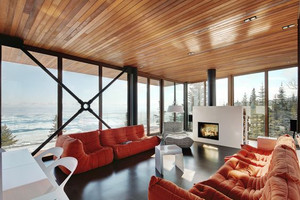
Stuv 21-125 Clad Double Face Freestanding Fireplace DF2
STUV Contemporary Wood Stoves and Fireplaces

STUV Contemporary Wood Stoves and Fireplaces







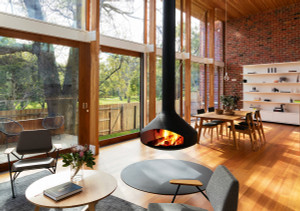

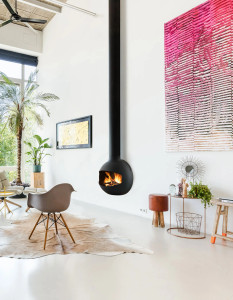



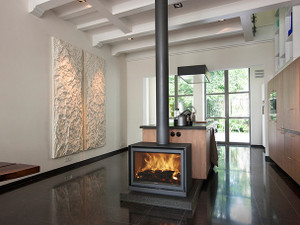

Nectre Fireplace Products Wood Burning Heaters

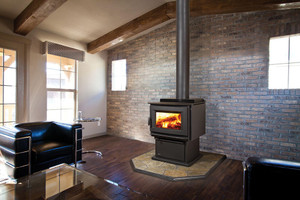
Regency Fireplace Products-Gas Inserts, Wood Stoves & More



Nectre Fireplace Products Wood Burning Heaters

Regency Fireplace Products-Gas Inserts, Wood Stoves & More


The evolution of home heating has seen a surge in the popularity of wood-burning appliances, combining traditional warmth with modern design. Among these, suspended fireplaces stand as a testament to the fusion of form and function. These heating units are exactly what they sound like—a fireplace that is suspended in the air, typically by a ceiling mount, transforming a traditional wood stove into a contemporary centerpiece. Unlike a freestanding wood stove, a suspended fireplace offers a 360-degree view of the flames and serves as a striking visual element while efficiently warming the space.
Freestanding wood stoves and fireplaces have long been cherished for their dependability and cost-effective heating. The radiant heat from a freestanding wood stove can heat a room or an entire home, with various models available from compact options suitable for smaller spaces to larger ones that can serve as the primary heat source. Available in styles ranging from the rugged, cast iron wood stoves reminiscent of a bygone era to sleek, contemporary wood stoves, these standalone units offer versatility in placement and design, often becoming a room's focal point.
While the classic cast iron wood stoves like the Vermont Castings have been celebrated for durability, the entry of modern suspended fireplaces into the market has changed the conversation. These innovative designs hang from the ceiling, casting a warm glow that seems to levitate above the floor. The unique aesthetic of a suspended wood-burning fireplace provides not only warmth but also an artistic statement, enhancing the visual appeal of any environment—whether it's a rustic retreat or a minimalist modern home. Moreover, with models available for sale, homeowners can infuse their space with this blend of artistry and practicality, creating an atmosphere that is both welcoming and stylish.
Choosing the right wood burning solution for your home involves considering the style, heat efficiency, and space requirements. Wood burning solutions can range from traditional setups to modern designs.
Traditional wood stoves are known for their durable construction and efficient heating capabilities. Often made of cast iron, these stoves provide a classic look that suits many home decors. Notably, Vermont Castings is renowned for their high-quality stoves that exemplify this timeless design. For those looking to purchase a wood stove, exploring a variety of options such as small wood burning stoves or larger models can be essential.
Suspended fireplaces offer a sleek, contemporary design that can serve as a striking centerpiece in any modern home. These units hang from the ceiling, often boasting 360-degree glass enclosures for uninterrupted views of the flames. They are not only aesthetically pleasing but also save floor space, making them suitable for rooms where square footage is at a premium.
Freestanding fireplaces are versatile and come in both traditional and contemporary designs. They stand independently and can be situated anywhere in the room, provided there is proper ventilation. Some popular styles include freestanding wood stove fireplaces, which combine the charm of a stove with the ambience of a traditional fireplace. When considering a freestanding wood burning solution, one should look into the many styles available, including cast iron wood stoves and more modern iterations. For those interested in these types of fireplaces, an assortment of freestanding fireplaces at reputable retailers may fit their needs.
The aesthetics of wood stoves and fireplaces have evolved significantly, offering a variety of designs ranging from sleek, contemporary to time-honored, rustic styles.
Contemporary wood stoves and suspended fireplaces are characterized by their clean lines, minimalist forms, and innovative materials. Manufacturers have created pieces that are not only functional but also serve as modern art installations. For example, modern suspended fireplaces hang from the ceiling, becoming central features in a room and providing a 360-degree view of the fire. They often feature a combination of glass and steel and are designed to blend seamlessly with a modern home's interior.
On the other hand, classic and rustic styled wood stoves and fireplaces draw inspiration from traditional designs, often featuring cast iron and intricate detailing. Freestanding wood stoves, a nod to the past, are robust and often feature ornamental designs with a timeless appeal. The Vermont Castings wood stove is an iconic example, renowned for its craftsmanship and durability. Rustic designs aim to evoke a warm, nostalgic feel, ideal for homes with country or traditional decor themes.
When considering the installation and upkeep of a wood-burning stove or a suspended fireplace, there are specific criteria and regular maintenance tasks to ensure safety and efficiency.
Wood-Burning Stove:
Suspended Fireplace:
Wood-Burning Stove:
Suspended Fireplace:
In this section, readers will find precise answers to common inquiries about wood burning stoves and suspended fireplaces, addressing functionality, installation, choice, safety, and material benefits.
Suspended fireplaces operate similarly to traditional ones by burning wood to create heat. However, their design allows them to radiate warmth from all sides, often making them more efficient in heat distribution.
The installation of a suspended wood burning fireplace requires securing to a ceiling support, ensuring structural integrity, and adherence to manufacturer's clearances for safety. An adequate ventilation system is also a necessity.
When choosing between a freestanding wood stove and a suspended fireplace, one should consider space requirements, aesthetic preference, heat efficiency, and installation implications for their specific home layout.
The best wood stove for a home depends on the space size, insulation quality, and the user's heating requirements. High-quality stoves with efficiency ratings and appropriate BTU output for the space are preferable.
Safety considerations for indoor wood burning stoves include maintaining clearances from combustible materials, regular maintenance of the chimney and flue, using appropriate fuel, and ensuring proper ventilation.
Cast iron wood stoves offer durability and heat retention, leading to consistent warmth. They typically have a longer lifespan than stoves made from other materials, providing lasting efficiency and reliability.